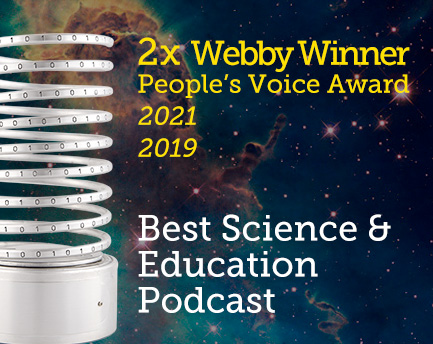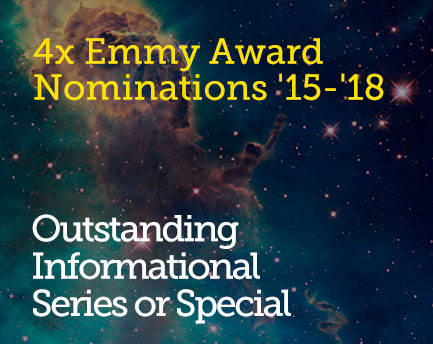July 13, 2016 1:06 pm
Storytelling and Science
This guest blog post is by Alex Hanson, StarTalk’s STEAM intern. She is a junior at NYU and founder/editor of HERpothesis, which showcases work by creative young women inspired by STEAM.
My 18-year-old brother and I recently visited the Hayden Planetarium in New York City. As we examined diagrams about star formation, discovered our weight on different planets and stars (I’m about two trillion pounds on a neutron star, yikes!), and watched videos about the LIGO gravitational wave observation, I considered how all of this tied into a Cosmic Queries episode of StarTalk I had recently listened to. There are several factors that were pointing my thoughts in this direction: our StarTalk TV show on the National Geographic channel is taped in the Cullman Hall of the Universe at the Rose Center for Earth and Space at the American Museum of Natural History, where your personal astrophysicist Neil deGrasse Tyson is the director of the Hayden Planetarium, but what really reminded me of this particular episode was the unique combination of art and science that my brother and I were experiencing in the exhibit.
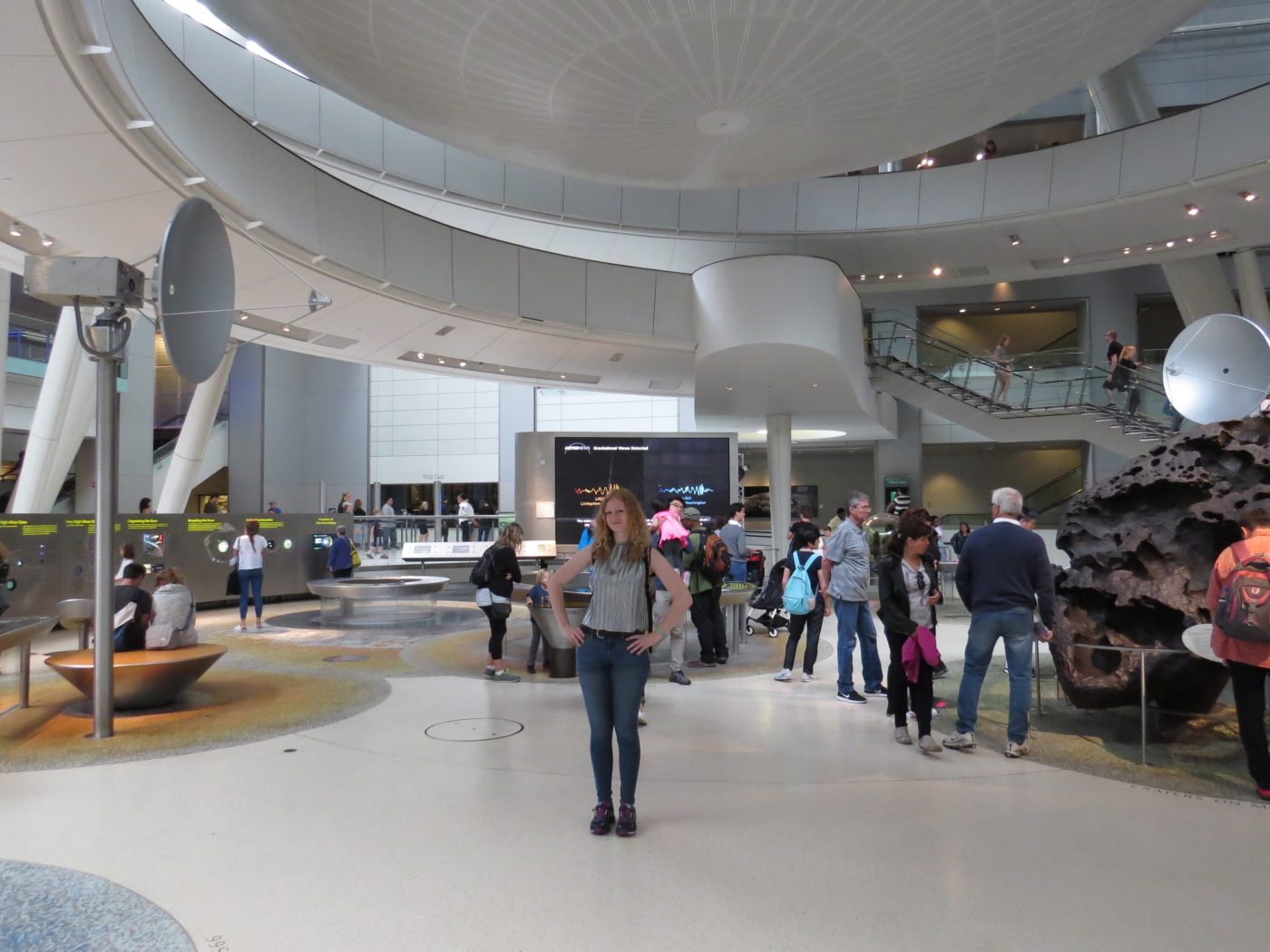
In StarTalk’s season five episode “Cosmic Queries: Art and Science,” Neil and co-host Chuck Nice answer fan-submitted questions about the collisions of these two fields. They touch on computer-generated art, the Golden Ratio, Leonardo da Vinci’s “Vitruvian Man,” whether an artificial intelligence could ever be an artist, and Neil’s personal relationship with Vincent Van Gogh’s “The Starry Night.”
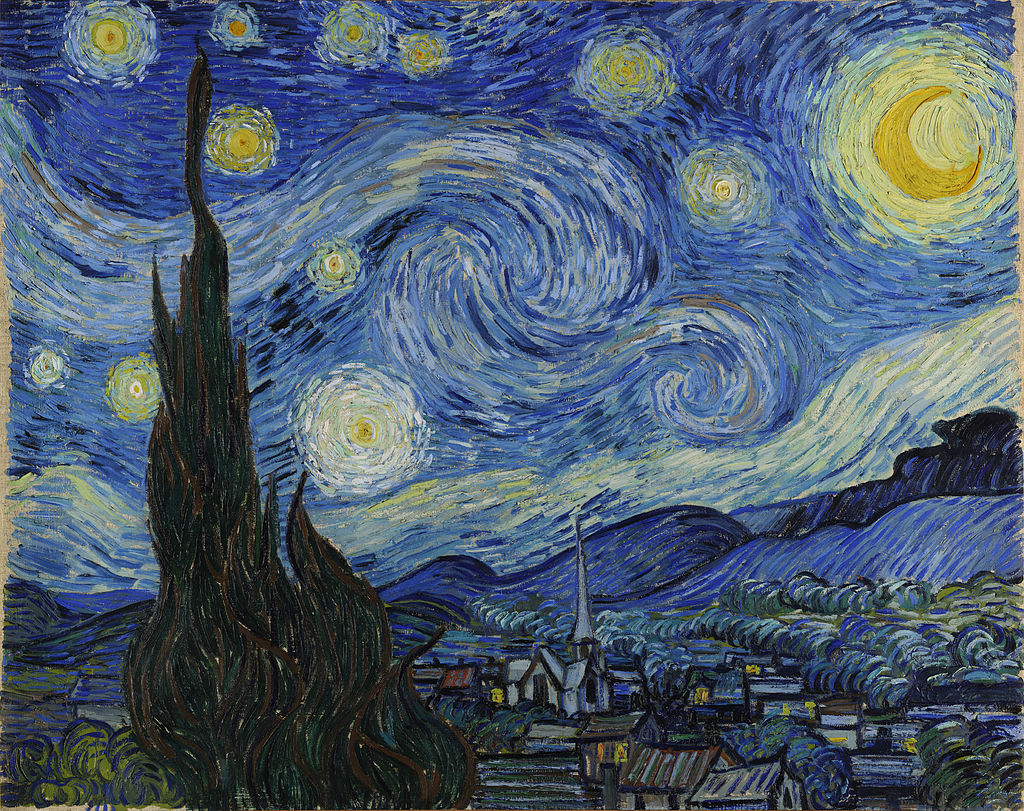
“The Starry Night” is one of Neil’s “favorite works of art of all time,” he says in the episode, and he has a recreation of it hanging in his office at the Hayden Planetarium. This world-famous painting is undeniably striking—I’ve even dreamt about it. When I stumbled upon it at my first Museum of Modern Art visit a couple of years ago I was in complete awe. In “Cosmic Queries: Art and Science,” Neil points out one of the key reasons “The Starry Night” is so intriguing: he says it’s “named for that which was in the background, not the foreground.”
Take this thought and combine it with one of the other big talking points of the episode: Neil’s call for incorporating more scientists into the stories we experience as a culture. “I want scientists to show up in the everyday storytelling of novelists and poets,” he says, “the people who are responsible for bringing culture and the joys and pains of culture into our daily lives.” In this thread of discussion Neil points out the popularity of the sitcom The Big Bang Theory and pitches his own scientist-centric sitcom idea (An entomologist and an exterminator fall in love. Drama ensues!). I wish I could go back in time and tell him that the next couple of years would bring us amazing works like The Martian and Interstellar, both of which put scientists at the forefront of hugely successful works of fiction (but we all know I wouldn’t have to because Neil is always on the scientists-in-storytelling beat). People love storytelling, and I believe it is important to hear stories about the scientific developments that are in the background of our culture, driving us forward into new technologies and understandings of our universe, and bringing them to our immediate attention—the way the title of “The Starry Night” acknowledges the background stars shining down on the city below.
There are so many beautiful ways that artists are bringing scientific exploration to the public through art and media. Beyond the two blockbuster space exploration films mentioned above, films based on real people like 2014’s Stephen Hawking biopic The Theory of Everything and this year’s film about mathematician Srinivasa Ramanujan The Man Who Knew Infinity are bringing the lives and processes of great thinkers to the big screen. Next month, illustrator Rachel Ignotofsky is releasing her new book Women in Science: 50 Fearless Pioneers Who Changed the World, which will highlight its titular pioneers with bios and portraits in Ignotofsky’s colorful, cartoon style. My website HERpothesis features work made by college and high school women that take creative approaches to the STEM fields through art, writing, and interviewing women that are pioneering the intersections between STEM and art, or STEAM.
Our own StarTalk All-Stars hosts are masters of creatively presenting scientific ideas. I loved interviewing Janna Levin about her book Black Hole Blues and Other Songs From Outer Space, which tells the stories of the scientists behind LIGO’s recent gravitational waves observations. She’s written two other books: How The Universe Got Its Spots and A Madman Dreams of Turing Machines. Additionally, Dr. Janna Levin serves as the director of sciences at Pioneer Works, an organization that seeks to promote thought and collaboration across disciplines by providing spaces for radio shows, gallery exhibitions, research, and labs all in one building.
Dr. Natalie Starkey is in the process of writing her first popular science book Catching Stardust, which will look at the history of the universe through the lens of analyzing comets and asteroids. The book will also take us into the future, looking at plots to mine asteroids and divert the paths of objects that fly too close to Earth. In addition to bringing science to the public by writing for The Guardian and appearing on BBC and National Geographic, Natalie also organized the 2014 “Catch a Comet” exhibit at The Royal Society Summer Exhibition, an annual week-long festival that presents science talks and exhibits to the general public.
Dr. David Grinspoon, who you may know by his Twitter handle Dr. FunkySpoon, is quite funky indeed: he plays guitar, percussion, and sings. In his “Life Out There” performances, David narrated the story of the universe while The House Band of the Universe played music under visualizations of the cosmos at the Adler Planetarium in Denver. (See below: Dr. FunkySpoon and the StarTalk team playing “Moondance” at the Feb. 29th StarTalk All-Stars launch and Patreon Patrons holiday party). In addition to bringing the universe to the masses through music, he has written two books: Venus Revealed and Lonely Planets: The Natural Philosophy of Alien Life, the latter of which won the 2004 Pen Center Literary Award for Research Nonfiction.
Astronaut Dr. Mike Massimino has served as a scientist in storytelling himself. He has appeared as himself on both Sid the Science Kid, an animated show for children, and The Big Bang Theory, which Neil loves to discuss as proof that putting scientists in popular fiction works can be both accessible and enjoyable to the masses. He is also a Senior Advisor for Space Programs at The Intrepid Sea, Air & Space museum in New York City. Not only was Astro Mike the first person to tweet from space, but also he isn’t a bad singer —find him jamming along with Dr. Grinspoon in the cover version of Van Morrison’s “Moondance” clip above.
Dr. Emily Rice’s STARtorialist blog, which she co-authors with Summer Ash, shares astronomy-inspired fashion (fashion is an art form that is heavily informed by science and vice versa—more on that in my post, “Science is as Fierce as Ever.” By the way, Summer Ash is soon to be seen on a StarTalk All-Stars episode. Emily is also the coordinator for New York City’s division of Astronomy on Tap, an event series where scientists give fun presentations on astronomy topics and give out prizes for those who ask questions. The events, which combine the scientific and the social, take place in bars across the world.
On a personal note, StarTalk All-Star Bill Nye’s TV show from the 90s, Bill Nye the Science Guy, was hugely influential on my budding love of science as a preteen—by surrounding science lessons with music videos, skits, animation, and silly sound effects, each episode became a masterpiece of educational entertainment. I doubt anyone would argue when I say that the show’s theme song is a prized audiovisual work of art as well.
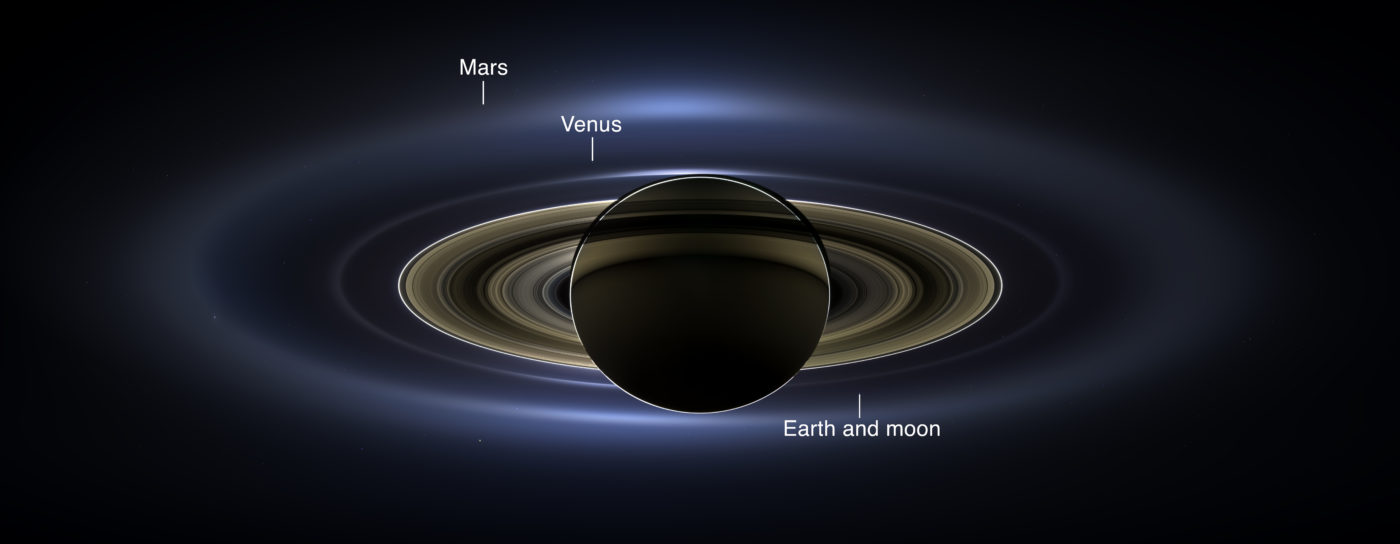
Dr. Carolyn Porco has worked as an imaging scientist for the Cassini mission to Saturn, the Voyager mission to the outer solar system, and the New Horizons mission to Pluto. Carolyn helped bring space to the big screen when she worked as a consultant on the movies Contact and J.J. Abrams’s 2009 Star Trek, and has brought science into the homes of so many readers through her writing in publications like The New York Times and Scientific American. One of Porco’s most famous creations brought the entire world together to smile for a picture taken from the Cassini spacecraft in Saturn’s orbit, known as “The Day The Earth Smiled.” This event was the first time an image of Earth was taken with the public’s advanced knowledge, allowing people around the world to feel involved in space exploration. The result is a gorgeous image of Saturn, with Earth in the background, hosting a population of people looking up into the sky and knowing that they are a part of a much bigger picture. For those of you who don’t already know, Carolyn was also involved in the Voyager mission’s “Pale Blue Dot,” one of the most important space photos ever taken.
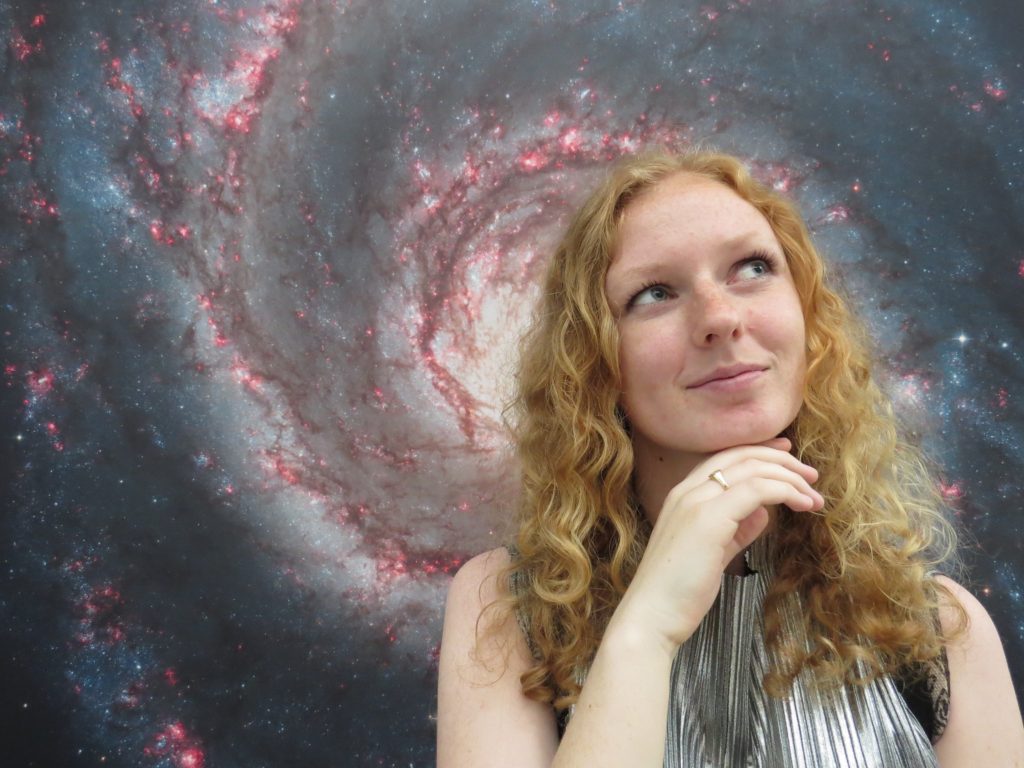
These StarTalk All-Stars are constantly creating new ways to reach out to the public and share about the wonders they get to research as members of the scientific community— which is why I was considering their work and “Cosmic Queries: Art and Science” on my museum visit with my brother. Museums are immersive experiences that use art to deliver science. The American Museum of Natural History transports its visitors to every continent and time period this Earth has known, but my favorite exhibit there is the one that takes us to the places humans have yet to see: The Cullman Hall of the Universe. Its stylized diagrams blur the lines between infographic and art piece, inviting visitors to engage without any fear of misunderstanding the science. My brother and I learned about The Big Bang, the formation of celestial bodies, and the evolving relationship between humans and outer space by taking advantage of the museum’s interactive approach. The Hall of the Universe, like the wonderful works of art created by StarTalk All-Stars, proves that there’s no better way to inspire an inquisitive mind than to surround it with visuals and stories.
NOTE: StarTalk All-Stars premieres on Tuesday, July 26th at 7 pm EDT. You can listen to new episodes every Tuesday on iTunes Podcasts, Google Play Music, SoundCloud, Stitcher, TuneIn and right here on our website.
Get the most out of StarTalk!
Ad-Free Audio Downloads
Priority Cosmic Queries
Patreon Exclusive AMAs
Signed Books from Neil
Live Streams with Neil
Learn the Meaning of Life
...and much more

 Become a Patron
Become a Patron
